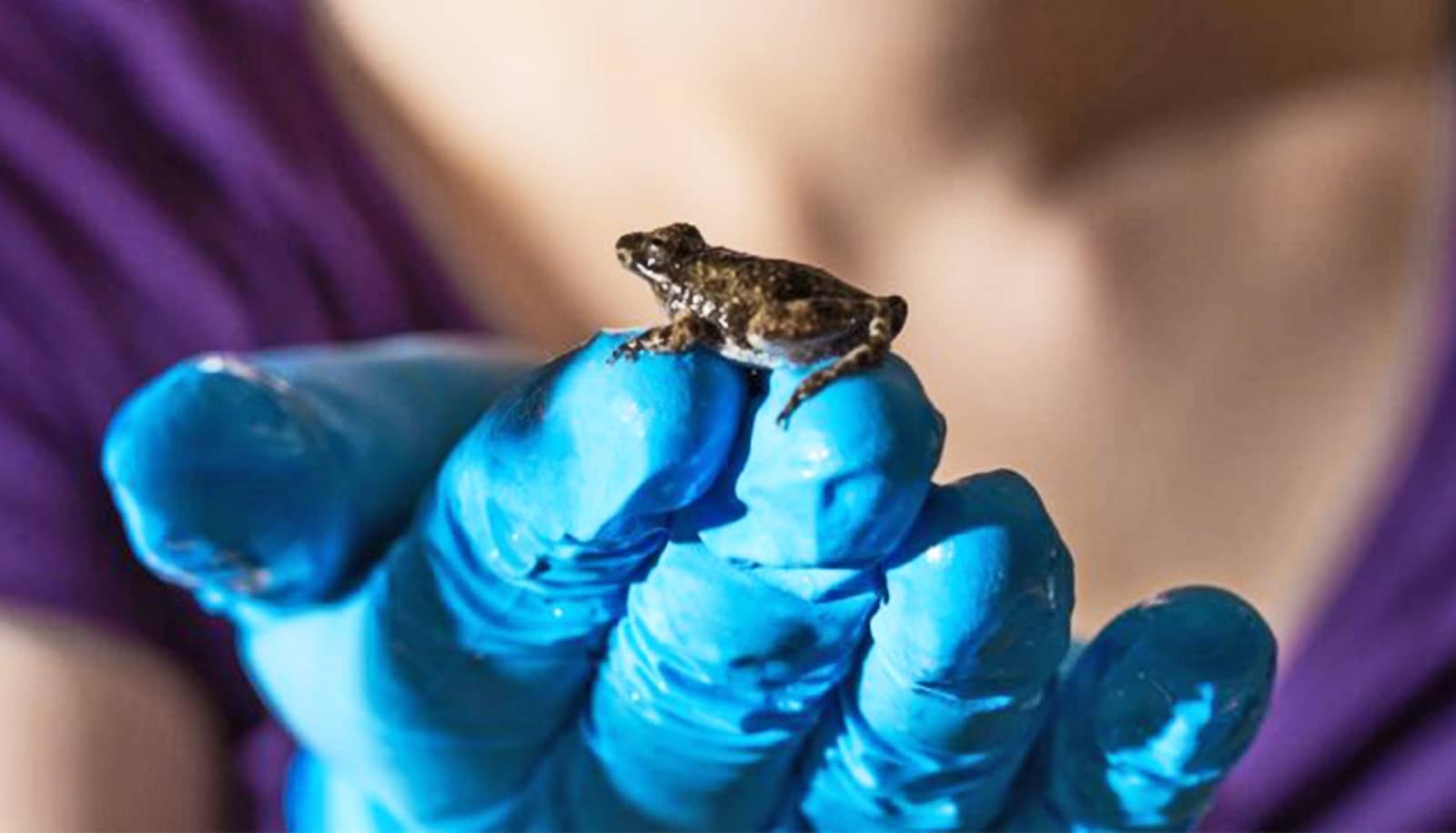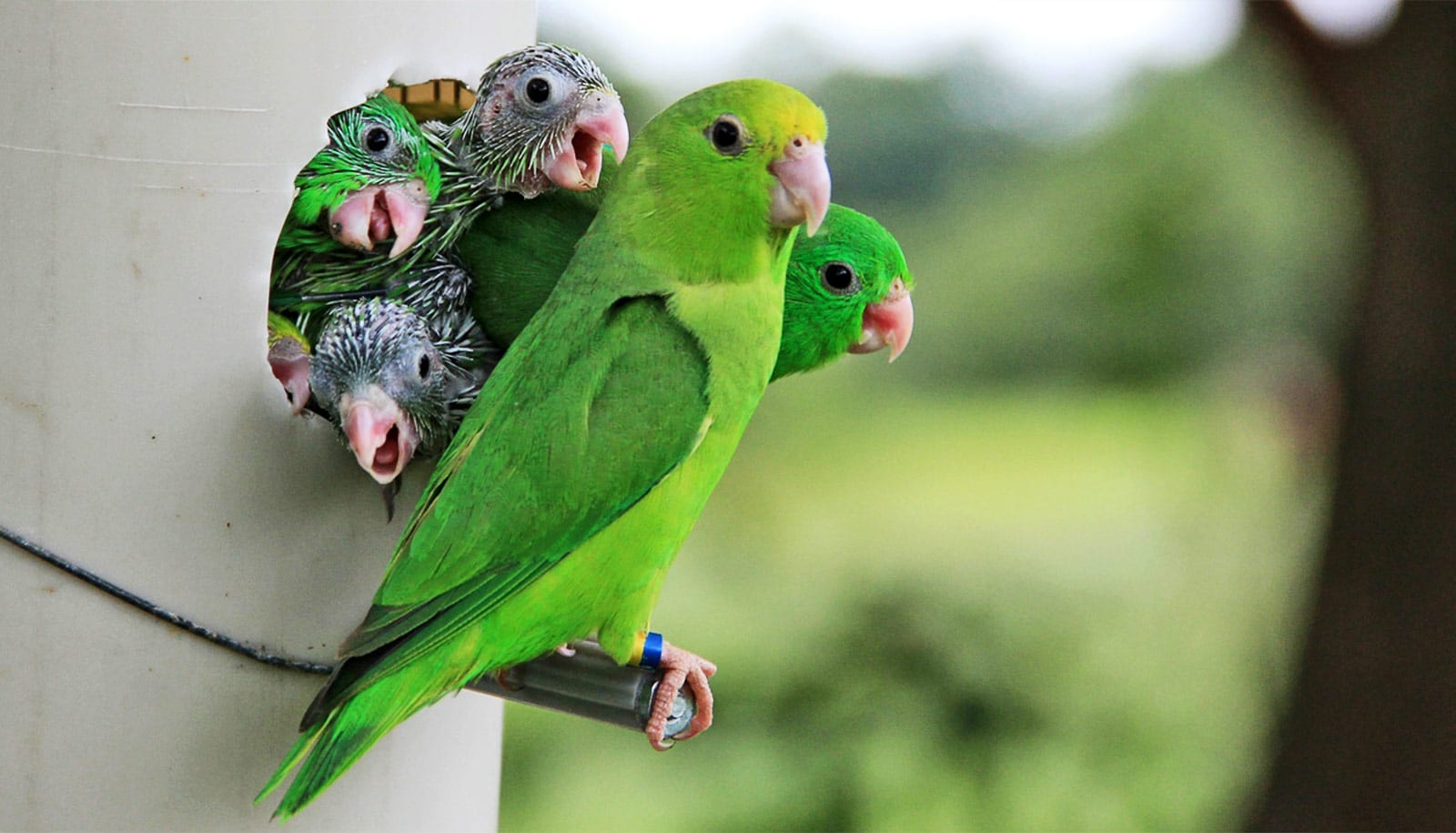Eggs are great places for frog embryos, but aren’t impervious to threats like limited oxygen, floods, fungal pathogens, and predators.
Biologist Karen Warkentin has found that red-eyed treefrog embryos are capable of assessing a variety of threats in surprising ways, and if danger presents itself, they can choose to hatch days earlier than they typically would.
The process is called environmentally cued hatching, and in the last decade researchers have found evidence that it works for all kinds of animals—from flatworms and snails to fishes, from frogs and salamanders to turtles and birds.
“Hatching is a controlled, regulated response,” says Warkentin, an associate professor of biology at Boston University. “At some point, the embryos will decide to do it. It’s amazing the information they attend to.”
Environmentally cued hatching, says Warkentin, is part of a bigger story, and it has led to a collective shift in thinking about development. Until the 1990s, biologists believed that animals that begin life in an egg hatch at a fixed time, regardless of what’s going on around them.
Change of plans
Red-eyed treefrog eggs, for example, typically hatch at six or seven days. As a frog embryo develops, it releases enzymes through glands in its head that break down the egg membrane, eventually allowing a tadpole to muscle its way out. But recent research by Warkentin and other scientists shows that many animals have the ability to scrap those plans.
As a result, she says, researchers no longer look at hatching—and development in general—as a process that has a fixed timetable, but rather one that is “fundamentally responsive and contextual.”
“Incorporating this plasticity into our thinking about biology is transformative,” Warkentin says. “It’s changing how we think about how life works.”
Her current research, funded by the National Science Foundation, focuses on two of the factors that can trigger early hatching in red-eyed treefrogs: vibrations that disturb the clutches, and a lack of oxygen, or hypoxia. “These are things that lots of eggs over a broad range of organisms—vertebrates and invertebrates—respond to,” she says. “They seem to be pretty widespread hatching cues and sources of information for embryos.” She is asking an array of questions about how and why the embryo’s behavior changes during development—from the animal’s first few days to the time it hatches.
Warkentin, who does much of her fieldwork at the Smithsonian Tropical Research Institute in Gamboa, Panama, has been studying redeyed treefrog eggs for more than 20 years.
Egg cups
The photogenic red-eyed treefrog makes its home in rain forests from Mexico to Colombia. During the breeding season, from May to November in Panama, female frogs lay clutches of eggs—40 or so eggs per clutch—on leaves and other vegetation overhanging ponds and swamps. At six or seven days, the tadpoles emerge and drop into the water.
But there are times when it’s better not to wait that long. If the eggs fall into the pond—an accident that will cut off their air supply—embryos can hatch in as little as three days. Warkentin is trying to learn what level of hypoxia induces hatching, how long the embryos take to decide to hatch, and how their oxygen needs and hatching ability change during development.
In the lab, she looks for answers using tiny glass cups just the right size for a dollhouse kitchen. (She commissioned 30 of them from a Newton, Massachusetts, glass artist.) Warkentin places a single frog egg in a cup, and puts the cup in a chamber fronted with a glass microscope slide. She fills the chamber with boiled, degassed water, and videotapes what happens next. In one video, the embryo wriggles around inside the egg in search of oxygen, and, failing to find enough air, begins pushing at the egg. Seconds later, it squeezes out.
Warkentin can also manipulate the environment inside the chamber with embryos of different ages and watch how the frogs behave. “We know what makes them hatch is a lack of oxygen,” she says. “They become sensitive to that cue really young and respond to it behaviorally long before they can hatch. So, probably their ability to gather that kind of information is not changing over the hatching period.”
Snake attacks and rainstorms
Studying an embryo’s response to vibrations is a bit more complicated. Gelatinous egg masses are shaky to begin with, and lots of things—both dangerous and benign—can disturb a clutch.
Warkentin’s earlier research focused on two such disturbances: snake attacks and rainstorms. By recording the vibrations and then playing them back to the embryos, she found that red-eyed treefrog embryos will hatch early in response to shaking by a snake taking a bite at the clutch, but not to the vibrations of raindrops pelting the eggs.
Working with Greg McDaniel, an associate professor of mechanical engineering, to develop and refine the vibration playback system, Warkentin discovered that the embryos are responding to the vibrational patterns and frequencies of each disturbance. “The more different features of the vibration they pay attention to simultaneously, the more it will reduce their risk of mistakes,” she says.
That’s important, because mistakes—deciding to remain in the egg during a snake attack or to hatch early because of a storm—can be costly. Preemies often die at higher rates; for one thing, they are poor swimmers and less able to escape from aquatic predators.
“Clearly, there are costs and risks involved with hatching early,” Warkentin says, “but if you’re going to die in the egg, you might as well take your chances in the pond.”
Source: Boston University


